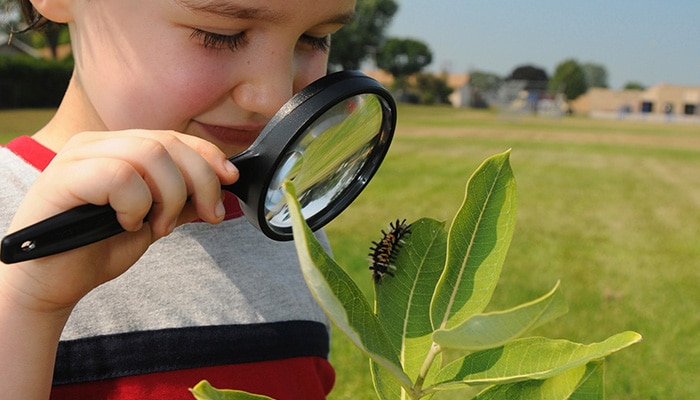While we believe that the books and resources recommended may be of value to you, keep in mind that these are suggestions only and you must do your own due diligence to determine whether the materials are appropriate and suitable for your use. PNC has no sponsorship or endorsement agreement with the authors or publishers of the materials listed.
CURIOUS CRAWLERS

Living Under Leaves
Children will explore insects’ habitats.

Lesson Objective
The children will discover and observe places where insects live.
Science
What You'll Need
- A safe, natural outdoor area for exploring that has leaves, rocks, and/or logs
- Sticks or wooden skewers 8"–12" long – 1 per child
- Flashlights – 1 per 2 children
- Magnifying glasses – 1 per 2 children
What To Do
Note: A good reference for teachers is the book, The Best Book of Bugs, by Claire Llewellyn. Assign partners for children prior to going outside to share flashlights and magnifying glasses.
- Introduce children to the world of insects by asking questions about what children might know about insects (see Guiding Student Inquiry).
- Tell the children they will be going outside to look for insects in their habitats.
- Take children outside, and begin looking for insects on the sidewalk or in the grass.
- The children may find a few insects; have them watch the insect to try to find out where the insect goes.
- Look for a place with some loose leaves or rocks. Demonstrate for the children how to gently lift up rocks, using the skewers (or sticks) to gently move leaves aside, and gently turn logs over.
- Ask them what they see underneath.
- Give children flashlights to help them see the insects. Discuss their findings.
- Distribute magnifying glasses for children to closely observe the insects. Discuss what insects need to live (see Did You Know?).
- When you are finished observing the insects, put their homes back together.
Resources
Home School Resources
Home educators: use these printable lesson PDFs to teach this lesson to your home schoolers. They're available in English and Spanish.
Content Provided By
Common Core State Standards Initiative – These lessons are aligned with the Common Core State Standards ("CCSS"). The CCSS provide a consistent, clear understanding of the concepts and skills children are expected to learn and guide teachers to provide their students with opportunities to gain these important skills and foundational knowledge [1]. Visit the CCSS


